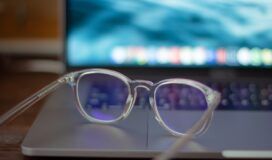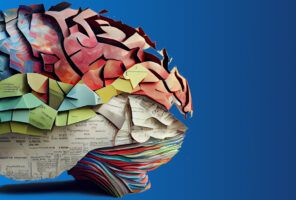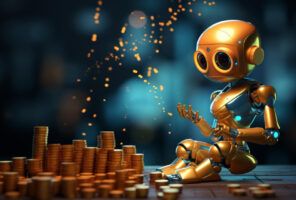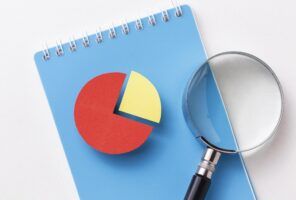10 Ways Computer Vision Helps Solve Business Problems
Artificial intelligence (AI) and computer vision are all around us. A range of industries use AI and computer vision to accomplish things like automating tasks, improving the environment and saving lives.
Computer vision uses machine and deep learning techniques to allow computers to "see" not only what humans can see, but also beyond the visual spectrum of humans. In some cases, computers can see inside solid objects.
How far has the industry come using computer vision? From agriculture to medicine, from insurance to industrial applications, applying computer vision techniques can unlock capabilities never before possible. Let’s look at its short history and highlight some innovative ways computer vision and AI are solving problems today.
Computer vision is capable of great things. But with any advancing technology, there is also the capacity to do great harm. Using these technologies will always be a balance of augmenting human capability, while maintaining the privacy of individuals.
Where it all started
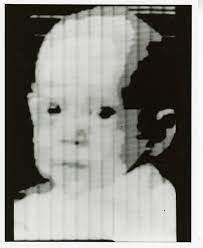
Where it all started
The year was 1959 when Russell Kirsch, an American engineer of the National Bureau of Standards, created the first digital image scanner. Kirsch used his access to the ‘Standards Electronic Automatic Computer’ to create a digital image of his newborn baby. The picture was only 176x176 pixels, gray scale, grainy; however, it’s one of the “100 photographs that changed the world” as ranked by Life magazine.
In the 60 years since, advancements in optics, computing power and powerful machine learning algorithms have made computer vision capable of real-time analysis of images and videos to detect objects, people, faces, poses, structural integrity issues, X-Rays/MRIs and temperature difference that the human eye is incapable of seeing. Computer vision, paired with audio augmentation, can even help the blind interact with the world around them like never before. The possibilities of how computer vision can transform lives and industries is limited—to use a cliché—only by our imaginations.
How computers "see"
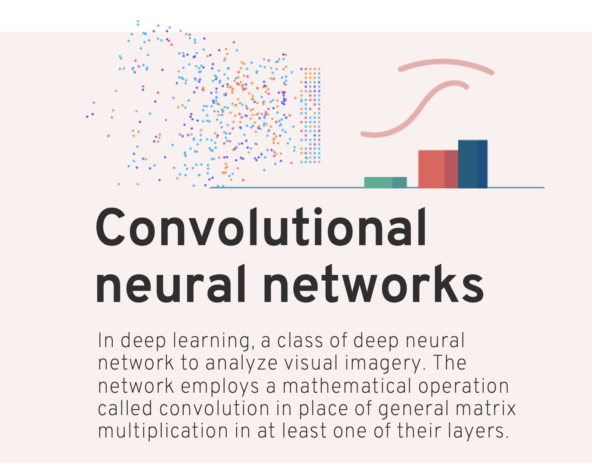
How computers "see"
The human brain is amazing in its ability to view the world and instantaneously classify and categorize the objects in the field of vision. No one is born knowing what a car looks like, and how a car is different from a bus or a chair. As we grow up, we train our brain to recognize the pattern differences between a car, a bus and chair and then instantly recall that information.
A computer also does not know the difference between a car, a bus or a chair. Rather, the computer is trained on the differences of these objects – and sees these objects differently than humans do. A computer will only see a collection or matrix of numbers, that represents an image and within the image will be a number of objects.
To detect objects, a computer must be shown many examples of the objects we need the computer algorithm to recognize. This process is called ‘training’ a model where a model is an ordered collection of mathematical operations. The machine learning algorithms most commonly used to train computer vision systems are ‘convolutional neural networks’. These mathematical networks allow the computer to identify meaningful patterns for each object. After the model is trained, the computer will use the model to see if those meaningful patterns exist in the image.
Now, let’s spark your imagination. How might you use computer vision in your work? Here’s some ways others are doing it.
1. Enforcing workplace safety
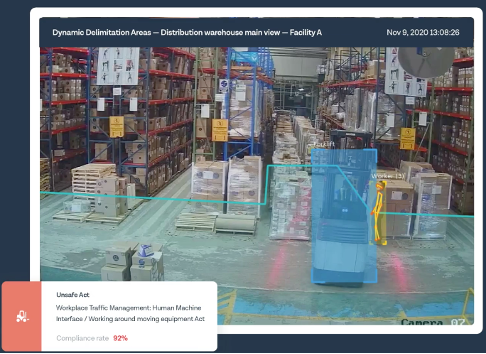
1. Enforcing workplace safety
Not to belabor the point, but 2020/2021 was all about social safety guidelines. Computer vision systems can detect if someone is wearing a mask or not and check their temperature before allowing entry to a public place. A people-counting system can tell you the occupancy level of a store before you enter, and can likewise help establishments know it has reached a safe capacity that allows for adequate physical distancing.
Computer vision can also be used to determine if workers are wearing the appropriate safety gear and protective equipment, like safety glasses and hard hats, before allowing entrance to the work site. Computer vision can be used to help inform and remind everyone in the workplace of the necessary safety measures.
2. Measuring immunity cells in cancer patients
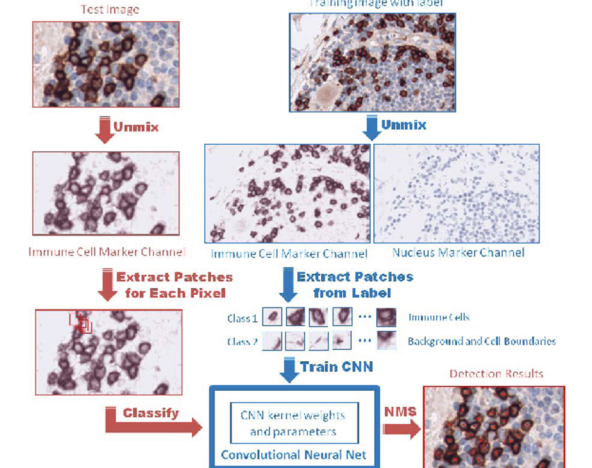
2. Measuring immunity cells in cancer patients
Many articles have been written concerning how AI and computer vision can read X-rays and MRIs with near human accuracy rates. Today computer vision can ‘see’ anomalies in images that the human eye cannot. So while the accuracy rate might not exceed that of humans, the depth and breadth of what a computer and an algorithm can see is much greater. By using computer vision to augment the abilities of medical professionals, we can now see more than ever. The history of evolution is substantial. Suffice to say, each wave of technology modernization came about to solve a previous tech problem or need. Desktop applications were developed because everyone had a personal computer and wanted to “digitize” their processes. This led to massive data duplication, inconsistencies and security problems.
One area of interest is in measuring the number of immunity cells in cancer patients. Why is it that some patients succumb to cancer much quicker than other patients? One theory is that some patients have a much better immune response. Along with detecting cancerous cells, detecting the level of immune response is an indicator of patient prognosis.
Doctors can now apply coloring to cells to highlight the immune cells, an amazing feat in and of itself. But how does that doctor count and analyze the immune cells versus the cancerous cells? This is where computer vision plays an important role in this process. Computer vision systems can be trained to differentiate between cancerous and immune cells and apply coloring to provide information as to the ratio of immune cells to cancer cells. Without the augmentation of computer vision to this microscopic world, it would be difficult to measure this relationship.
In one study, researchers trained a system to determine that cancer cells in regions low in immune cells are more likely to trigger a relapse. Logically, this would make sense, but now doctors can actually see these areas and the extent to which the low immune cell regions exist.
3. Monitoring physical therapy progress
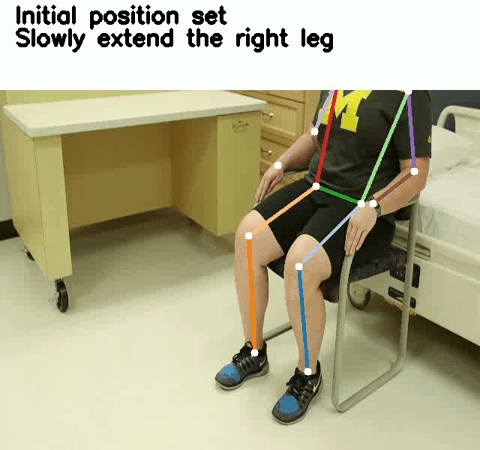
3. Monitoring physical therapy progress
Pose recognition can be used to monitor a patient’s progress in a physical therapy program. It recognizes key body landmarks such as shoulders, elbows, wrists, knees, and facial features. This information can be used to determine a person’s pose in real time. Pose recognition can be used to measure posture during the activity, how long the patient has held the pose, and whether the patient achieved the desired outcomes. In the spirit of augmentation, this usage would not replace the physical therapist but augment the one-on-one instruction by a physical therapist to help monitor how a patient is progressing and if adjustments need to be made.
4. Analyzing X-rays for COVID-19 symptoms
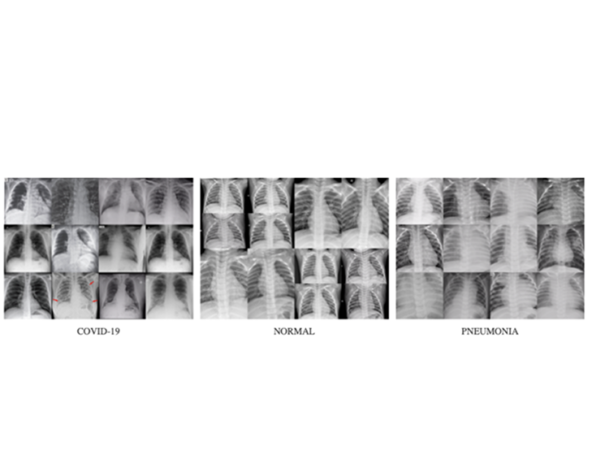
4. Analyzing X-rays for COVID-19 symptoms
Computer vision can be used to analyze chest X-rays and determine if the X-ray indicates COVID-19, or potentially pneumonia. Using computer vision, deep learning and thousands of training images, a model can be created to differentiate between pneumonia, heart failure, COVID or other illnesses. It takes a trained clinician to recognize the differences, which are subtle, and finding the differences in the X-ray patterns is exactly what deep learning is very good at doing. As Ramsey Wehbe, cardiologist, has said: “AI doesn’t confirm whether or not someone has the virus. But if we can flag a patient with this algorithm, we could speed up triage before the test results come back.” This is exactly where AI can augment the skills of a trained clinician for better patient outcomes.
5. Using drone imagery for insurance claims
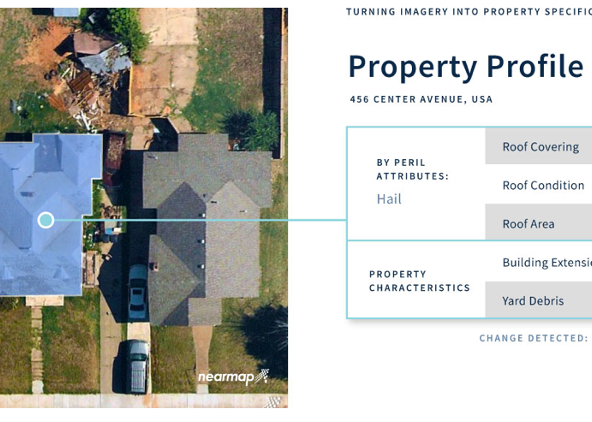
5. Using drone imagery for insurance claims
Insurance companies are using computer vision and drones to collect high resolution pictures of a home’s roof and overall footprint. From this data, along with additional data about a home, insurance companies can provide quick quotes and settlements. Adjusters only need to be dispatched when an insurance claim cannot be settled by the computer vision application. This allows insurance companies to reduce the cost of claims adjustments on easy determinations and allow the adjuster to work on the more difficult claims.
6. Finding the lettuce core

6. Finding the lettuce core
The most talked about object detection is related to autonomous vehicles and the how the vehicle is detecting other vehicles, pedestrians, traffic control system, etc. One lesser known example is the ability to detect the location of the stem of a head of lettuce. Industrial machines designed to de-core heads of lettuce use computer vision and object detection to inform the machine where in the image the stem is located and how large the bounding box is so the machine can automatically de-core the lettuce.
7. Monitoring beer levels while bottling
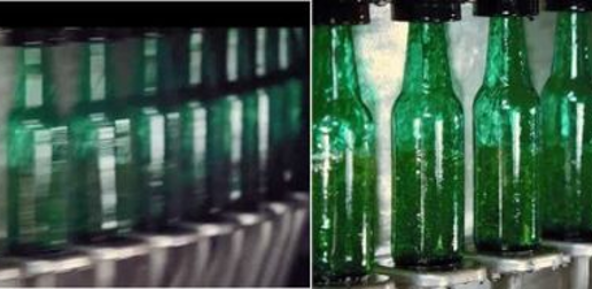
7. Monitoring beer levels while bottling
Every step in the fast-paced bottling process is monitored and managed – particularly the final steps of filling the bottle. Making sure every bottle is filled to tolerance at the rate required is impossible for a human, and statistical sampling will be too slow to react to an issue. Computer vision can be used monitor liquid levels and flag the exact bottle that is out of tolerance, meaning no one will be left with a beer that leaves you wanting for a little more.
8. Finding defects in railroad tracks
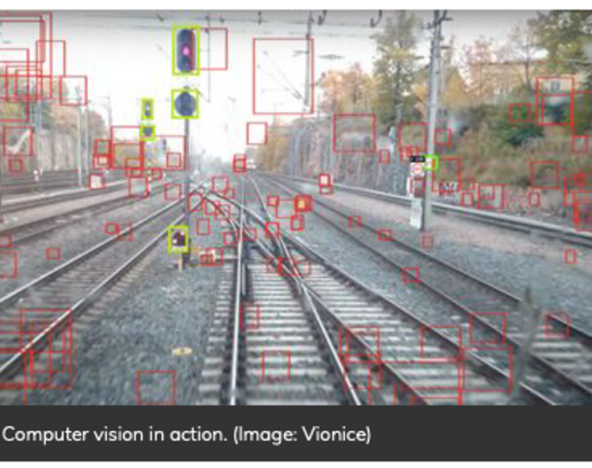
8. Finding defects in railroad tracks
There are more than 140,000 miles of railroad tracks. In 2018, the industry spent an average of $260,000 per mile for maintenance, funding and future needs. Identifying maintenance issues before there is a disruption to some of the 140,000 miles is paramount to efficiently running the railway system. How can all 140,000 miles of track be inspected and analyzed for potential defects? The answer is to mount cameras on railway cars, that are operating on the tracks already, to visually inspect every inch of the railroad track and the track bed. This allows for the continuous monitoring of the railroad infrastructure while using the tracks.Computer vision is used to capture high speed, high resolution pictures of the tracks and the track bed. These images are later analyzed and defects can be scored. A person can later go through and triage the most important projects.
9. Detecting parasites on salmon
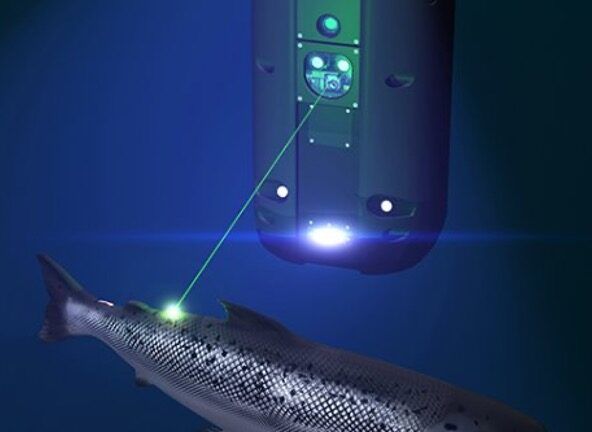
9. Detecting parasites on salmon
Salmon ocean-farms are using AI and computer vision to detect parasites on salmon and directing low energy lasers to "zap" the parasites from the salmon. AI algorithms are developed to detect the parasites and instruct the laser where to focus to kill the parasite. Such systems help keep the ocean farms safe for the salmon and working around the clock in all weather.
10. Detect mites on bees
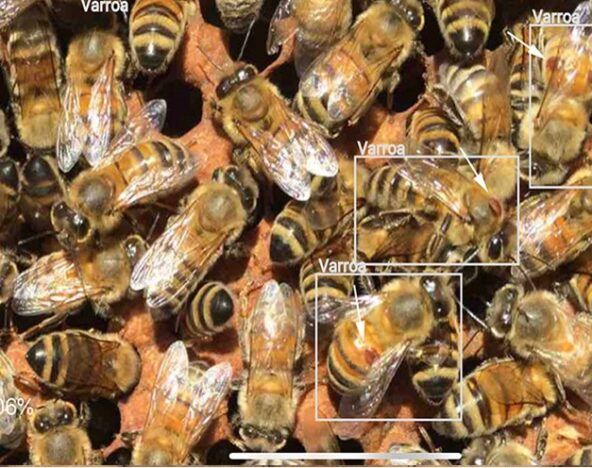
10. Detect mites on bees
There are many risks to maintaining a healthy beehive, but mites that attack a hive can devastate the entire hive quickly. Beekeepers are creating an AI and computer vision system to detect when mites have attached themselves to bees and remove the mite in ways that won’t harm the bees.
Ready for what's next?
Computer vision with AI has revolutionized industries and will continue to do so. While computer vision technology has the potential to eliminate some jobs, it also has the potential to perform tasks that humans cannot. As with any disruptive technology – there will be disruption to the status quo.
Take a moment to consider how computer vision might be used in your industry. Is there an opportunity that needs to be explored? Together, we can help you identify opportunities where computer vision and AI could help you work more efficiently.
References:
https://www.intenseye.com
https://link.springer.com/chapter/10.1007/978-3-319-10581-9_3
https://www.nature.com/articles/d41586-020-03157-9
https://heartbeat.fritz.ai/detecting-skin-cancer-on-ios-with-xcode-and-create-ml-4cb0f80cb3
https://medium.com/@_samkitjain/physio-pose-a-virtual-physiotherapy-assistant-7d1c17db3159
https://agmanic.com/detect-bottle-fill-level-with-50-lines-of-python/
https://papers.ssrn.com/sol3/papers.cfm?abstract_id=3572179
https://www.globalrailwayreview.com/article/30202/computer-vision-based-solution-sign-detection/
